3/25/2015:
- total power recording for 1mm scans was increased to ~83 Hz (from 10 Hz subsampled) in order to measure and compensate for gain fluctuations (few % or less) in the receiver which were happening above nyquist (and aliasing in).
- new total power data seems promising, although it is a bit of a challenge to process (short segments, time glitches, discontinuous, irregular sampling)
- noise behavior of receiver/totalpower system varies
- attempt to filter and detrend data to prepare for pointing tests, processed data is successfully gridded onto a sky map by Gopal's libraries so it can be used for current sky location fitting routines.
- Before and after filtering:
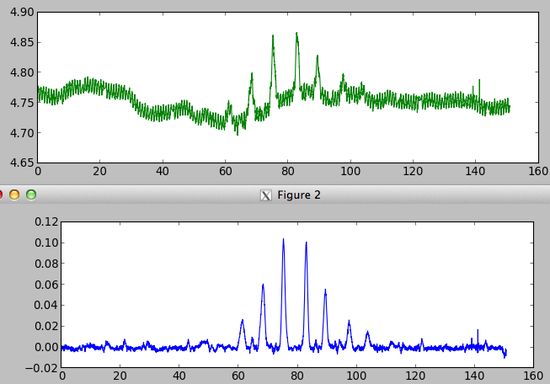
- All of our available scans from the new aquisition system are of Saturn,
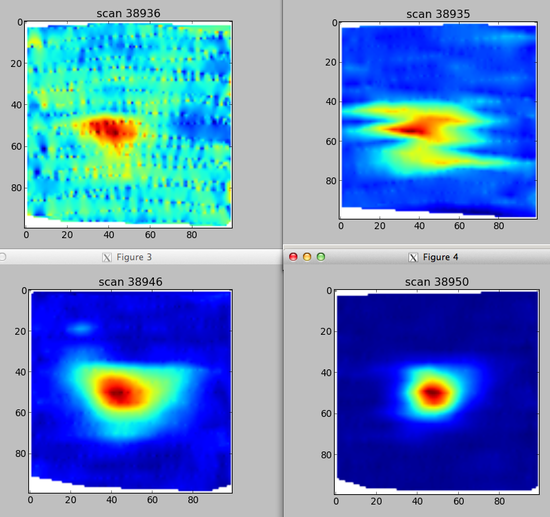
- algorithm in brief:
- fix data artifacts (time errors, interpolate through gaps, resample onto regular time spacing)
- remove mean
- low pass 10 Hz and line filter (1.2 Hz, 1.5 Hz, 11.45 Hz and harmonics, mixed frequencies)
- running minimum window to find points for detrending
- low pass filter applied to minimum series to establish trend
- trend subtracted
- interpolate onto sky grid
- on agave:
- ~lmtmc/lindy/pyinit.process(iobs, showmap=True)
Low-pass filtering point scans from 3/21
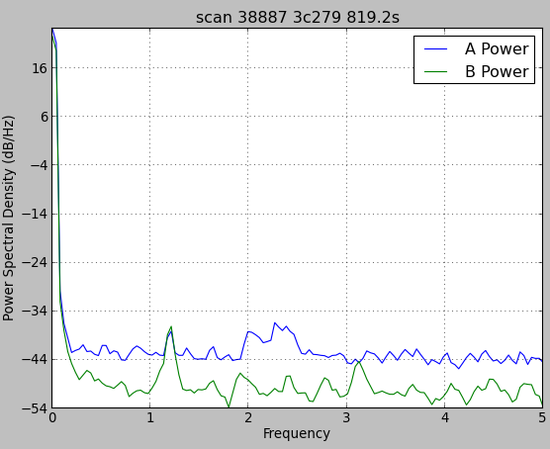
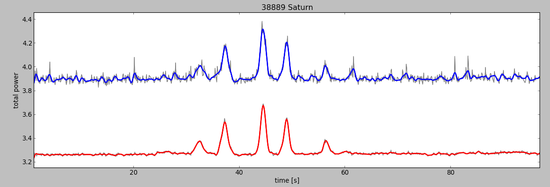
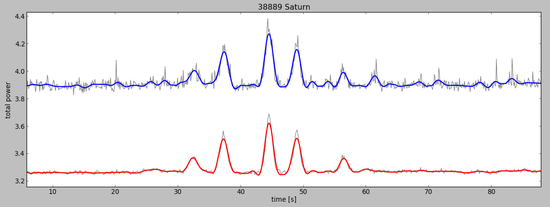
Measuring total power at VLBI backend
- Measure total power using Mark6 recorded 2-bit data by checking 2-bit occupancy
- There is a time offset (4.5s) between the scan time and that reported in the total power files (leap seconds?)
- Assumed every packet was exactly 8 microseconds, and used 31250 = 0.25s per integration.
- Same time offset in A and B channels (IF0 and IF1)
- IF0 and APower are both noisy (Saturn scan)
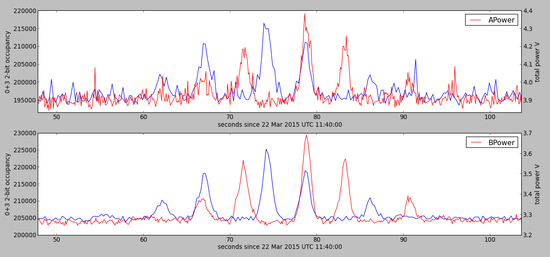
- Time aligned (added 4.5s to Mark6 time)
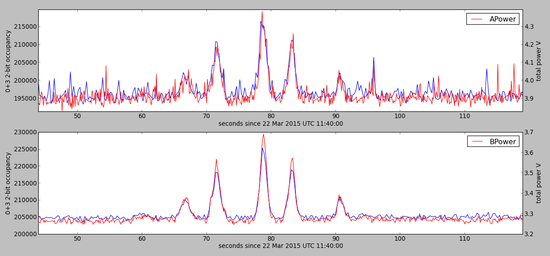
- Measure total power using Mark6 eht3 and eth5 packets by checking 2-bit occupancy
- Measure total power using R2DBE regular 8-bit snapshots as fast as possible
- Measure total power using custom R2DBE bitcode
3/22/2015
- Tried some simple detrending (splines) plus high-pass filtering
- Made cleaner images, but not able to find any 3C279 in scans
- I think the detrending is too aggressive, will work on some ad-hoc methods to make this more robust against DC level in the transit signal
- Ideally the background estimation would be different for every hypthoetical signal position.
Forward model fitting into time domain
- useful for dealing with regions of spectrum that have both signal and noise contributions
- starting beam width of 10 (arcsec, FWHM?)
- can characterize noise as stationary?
- how to get good local estimate of power spectrum?
Averaging multiple scans
Detrending with splines or high-pass filter














































